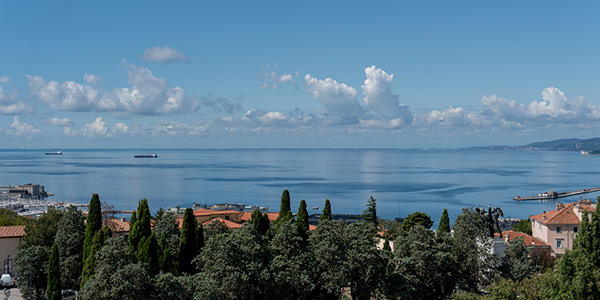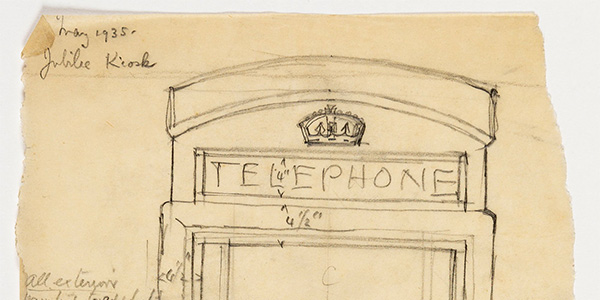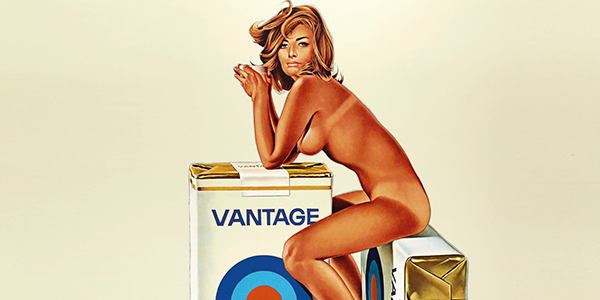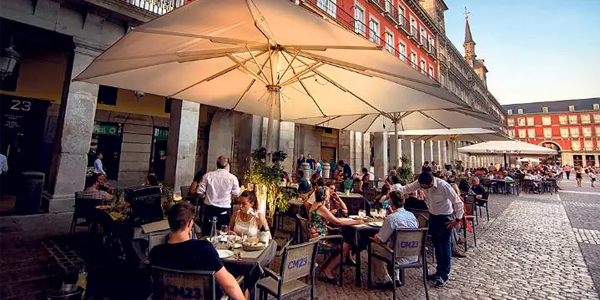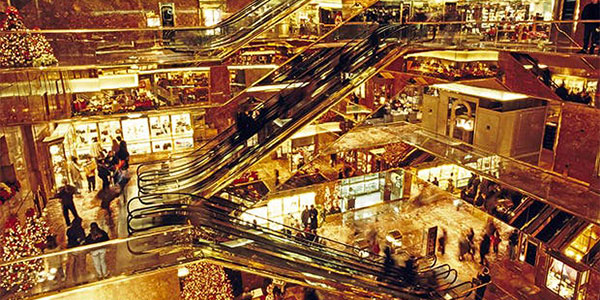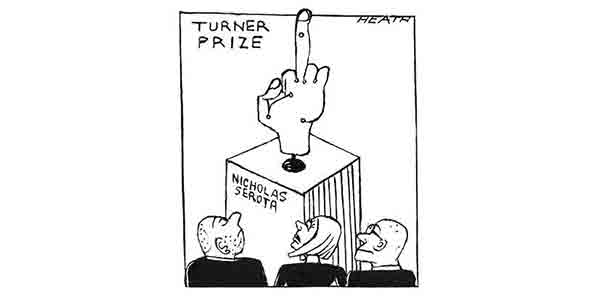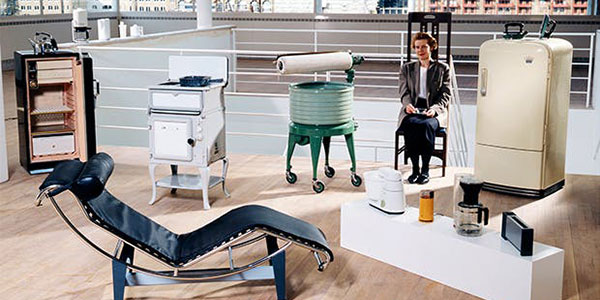Your parents die. The children leave home. Friends drift away. These are only some of the advantages of getting older.
But another advantage is getting invitations to events where youth and innocence would be disqualifications. One such was the recent Lamborghini Concorso d’Eleganza in Trieste.
Lamborghini is the great pretender among Italian sportscars. Ferrari is aristocratic and fine while the interloper Lamborghini takes excess to excess and to kitsch and beyond. But since it was acquired by Audi in 1998, a stern Germanic structure is beneath the extravagant Italian costume.
In this way, being driven around Trieste in a new Lamborghini Urus, an enormous four-wheel-drive evidently inspired by a wrestling match between a shark and Fireball XL5, was an automobile synopsis of the region itself where Italian and Austro-German (as well as Slovenian) cultures compete for attention.
Trieste became a free-port in 1719 and got rich from Baron Bruck’s busy Austrian-Lloyd shipping line. It has always been cosmopolitan, but factionalised too. The explorer and orientalist Richard Burton was British consul here in the late nineteenth century. His wife, Lady Burton, was amused by the local distinctions in character and motivation: “If an Austrian gave a ball, the Italian threw a bomb into it.” Jan Morris was moved to wistful elegy, writing of Baron Bruck’s “silken and epauletted passengers” who have now vanished.
After Hitler’s War, Trieste was a “Stato Topolino”, a Mickey Mouse of a place. It is now a part of Italy, if an equivocal one. Frontiers often amplify the national characteristics of opposing nations, as they do between, say, France and Belgium, but here they seem blurred. Venice is only an hour and a half away by frantic autostrada, but a world apart. Moreover, this is Trst. Why? Because Slovenian is at least as obvious here as Italian and its a language with a peculiar disdain for vowels. Or vwls.
You drop with relief off the autostrada and drive to Trieste itself along a fine coastal road with the Adriatic on one side and the karst on another: this is the limestone plateau which defines the area and reaches the sea in a dramatic craggy cliff. “Why not krst?” I wondered.
Because of its unique location, the area has always attracted extreme characters…. Dante, Winckelmann, Stendhal, Richard Burton himself, d’Annunzio, Freud, Rilke and James Joyce. Dante was on his travels and stayed at Duino castle, Winckelmann created modern art history, Burton published his translation of the Kama Sutra while here, d’Annunzio (a “cad” according to E.M. Forster) used the area a base for his quixotic nationalist air and motor-boat raids, Freud came here to study the sexual activity of eels, Rilke turned fret into one of the twentieth century’s greatest poems and while it was in Trieste that Joyce, pausing between booze and hookers, wrote one of the twentieth century’s greatest novels.
For anecdote and comment, there’s a lot to choose from here, but it’s Winckelmann, Rilke and Joyce who, for the visitor, are outstanding in the cntxt of Trst.
Johann Joachim Winckelmann was an itinerant librarian of genius whose Geschichte der Kunst des Alterthums (History of Ancient Art) of 1764 became the very first systematic work of art history. Travelling between Rome and Munich, he was murdered in his bed in Trieste’s Locanda Grande in 1768. Winckelmann’s appreciation of classical statuary was at least as associatively carnal as it was directly aesthetic and it’s fair to guess that the circumstances of his demise were a homosexual squabble as much as robbery.
Now his cenotaph is a dignified and perfect neo-classical temple in what, since 1843, has been the Orto Lapidario (Sculpture Garden): a haunting collection of huge antique fragments collected by Winckelmann and lugged by mule from Rome. It sits in the shadow of the Romanesque cathedral of San Giusto, Trieste’s outstanding monument. Ignored by contemporary tourists, the garden’s present scruffy neglect simply enhances its curious beauty.
Rilke was a guest of Marie von Thurn und Taxis in the family castle at Duino in 1912, a few kilometres north of the centre. The vicious bora was blowing. Sometimes, locals still tell you, it blows so hard it can knock you over. And one day the agitated Rilke was standing two hundred feet above rocks with crashing waves below, contemplating an annoying letter from his publisher. And then he was visited by an inspirational angel who blew him over. He wrote, unforgettably :
”Wer, wenn ich schrie, hoerte nich den aus der Engel/Ordnungen ?”. (Who, when I cry out, hears me from the ranks of the angels ?)
The Duino Elegies, for which the term angst might have been coined, were published ten years later.
Joyce arrived in Trieste in 1904. His regime was less one of angst and more one of bars and brothels, the one inevitably leading to the other. He ate a pastry called presnitz – figs, nuts and rum coiled into an intestinal shape – and drank red wine for breakfast. Later, he began a course of the prescription drug Galyl, a toxic combination of sulphur and arsenic. The Harvard academic Kevin Birmingham says this was a treatment for the syphilis Joyce contracted in 1907. Failing eyesight, ulcers and boils, all treated by a long-suffering local doctor, being the symptoms. Discomfort can be a stimulus to genius.
There is one grand hotel in Trieste, the Duchi d’Aosta. And Harry’s is the grand caffe-ristorante on its ground-floor. It has the best view of Piazza Unita d’Italia, which happens to be the largest square in Italy facing the sea, so there is a happy metaphor. But Joyce knew nothing of Harry’s: it only opened in 1972, a branch of the Cipriani family’s original Harry’s Bar in Venice where they invented bellinis and carpaccio. You can eat well. Indeed so well that Michelin gives Harry’s a star, but no-one goes to Trieste for the food.
You might go, instead, for coffee which is a matter of special local pride. Trieste is the home of Illy and latest figures suggest twice as much coffee is drunk here than in any other Italian city. Food no, but you certainly go for atmosphere. At the Antico Caffe San Marco, Joyce used to loiter between brothel and desk. The atmosphere is more Central European than Italian, emphasised by half the space being given to a bookshop. Emphasised even more when a gent wearing full tracht, Austrian folkloric costume, bustled in, a stein dangling from his braces. It could also be emphasised by explaining presnitz comes from a place called Kostanjevica Krasu. I could not find any on the San Marco menu, but you can eat ombolo which is a dish of cured quails eggs with caramelised onions.
A French author says the name of the city sounds like ‘sadness’. Certainly, I would not go to Trieste for a holiday, but a weekend is engaging. On this occasion, I chose not a grand hotel, but Portopiccolo, a resort in Duino-Aurisina, or, if you prefer, Devin Nabrezina. Take it as praise or condemnation, but this is an Italian Port Grimaud. Or perhaps a Slovenian Portmeirion. A developer’s ambitious project of seven years, its Falisia hotel is comfortable in a five star airport hotel fashion with very swish underground parking. And the views over Duino and the Golfo di Trieste are beautiful.
I wonder if thinking of getting older is a Triestino thing. Certainly, Jan Morris said the city is “organically inclined towards neurosis”. Significantly, there are few modern buildings here, excepting the fascist-flavoured Sala Tripcovich, now a theatre on the waterside. When he was a foreign correspondent in Trieste during the late seventies, Richard Bassett noted how difficult it was to meet young people, something charmingly recorded in his fine book Last Days in Old Europe.
Something about the city invites contemplation. Italo Svevo was the marine varnish manufacturer who befriended Joyce and, with the Irishman’s encouragement, became a great writer himself. Svevo’s birth-name was Schmitz who became Joyce’s model for Leopold Bloom: he was one of the “enlightened and hospitable Hebrews” described by Richard Burton. Svevo’s Senilita of 1898 became a Penguin Classic titled As a Man Grows Older. A narrative of senility is Trieste’s great native book.
Every commentator on Trieste is struck by its peculiar sense of dislocation, even sadness. Svevo’s biographer, P.N. Furbank noted how the city had acquired a reputation for suicide. Jan Morris thought of it as nowhere. Certainly, there is a sense of absence and loss. But also of space and opportunity. To my mind, the vastness of the Piazza Unita d’Italia prompted Joyce, along with the red wine and syphilis, to compose his enormous book some of whose sentences exceed three thousand words.
If you think you know Italy, Trieste is an eye-opener. Remarkable. Vienna-on-Sea, they used to call it. But as Italo Svevo knew: “You see things less clearly when you open your eyes too wide”.
(This article originally appeared in The Oldie | Photo by Kevin on Unsplash)
